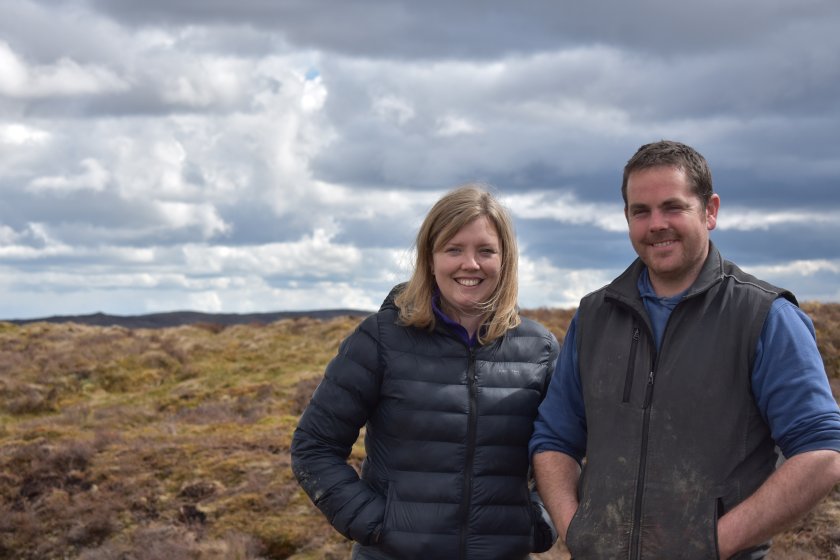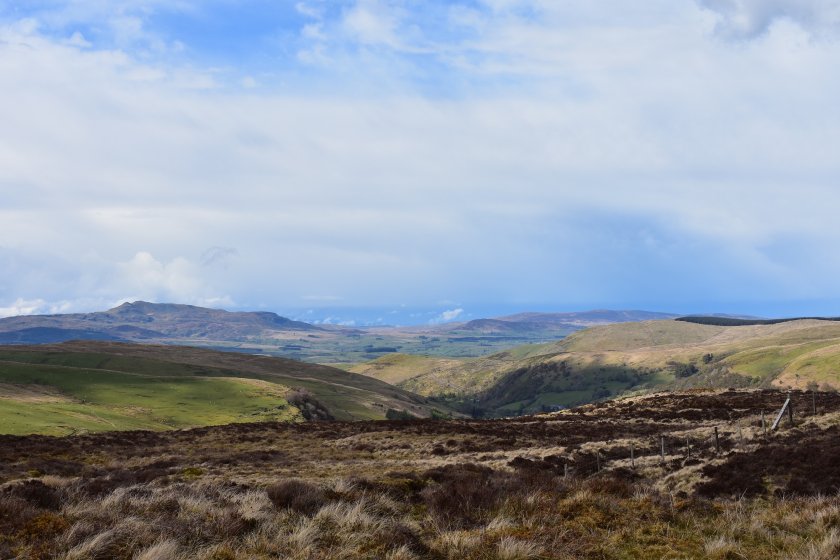
A North Wales farming family are leading the way in looking after the environment while producing food after undertaking extensive peatland restoration work.
The Roberts family, of Pennant Farm, Snowdonia, have set in motion restoration works to re-profile and block extensive complexes of hags and gullies across 66 hectares.
The family, who keep beef and sheep within the national park, say they have a strong sense of responsibility when it comes to looking after the environment as well as producing food.
It is estimated that over the next 35 years, their peatland restoration works will halt the loss of 2,335 tonnes of carbon emissions equivalent.
This roughly equates to the amount of carbon dioxide generated from burning 632 household tanks worth of oil.
The emissions from degraded UK peatlands currently account for 4% of total national emissions, making restoration of critical importance for climate targets.
Lisa Roberts explains how the project came to life: “I was on maternity leave with our second child, and thought there must be something we can do with the peat we’ve got up on the mountains similarly to the woodland carbon code.
"I looked into it and found out that there was a project coming up with the National Park. It was the first of its kind and a pilot scheme.
"After a lot of research, we jumped at the chance and it went from there. Today, the 65.77 hectare peatland restoration project has been successfully completed here on the edge of Snowdonia National Park ”
Running along the eastern edge of Snowdonia National Park, the project sits within the Berwyn and South Clwyd Mountains, which, at 2,209 ha, is one of the largest areas of upland heath in Europe.
The Bwlch y Groes peatland restoration site is a blanket bog situated on a large saddle west of Llyn Efyrnwy nestled between the Aran Fawddwy and the Berwyn mountain ranges in south Snowdonia.
Lisa added they were 'really lucky' in the support the family had for this project due to their collaboration with Snowdonia National Park.
"We were supported all the way from the start - getting the funding, starting the restoration to selling the carbon credits," she said.

"My main concern is that the general farmer, who doesn’t have the support from a National Park, would find selling the carbon credits more difficult.
"It’s new territory. You need to make sure you get it right if you want to get that carbon funding at the end.
"It has to be validated and you’ve got to look after it for at least 30 years. It’s a big commitment but achievable with the right support available.”
The area supports the most extensive tract of near-natural blanket bog in Wales and is the most important upland for breeding birds, supporting a wide range of important species.
As well as halting the loss of carbon from the site and protecting the significant store of carbon in the peatland, the works may have other benefits such as improved water quality, increased biodiversity and improved habitat conditions.
However, it is not a call for the removal of livestock from the mountain, Lisa said: “Livestock farming and looking after the environment go hand in hand here. We’ve had sheep and cattle here on the mountain.
"They are a vital part of keeping the biodiversity flourishing here on the hill. I don’t want to think about what it would look like if they weren’t here, it would be very much a monoculture.
"It’s about managing, not overstocking. We need to manage what we’ve got and manage it well to promote that biodiversity on this hill.
"The cattle up here have improved the land, opened up the swards and help to manage rushes and dwarf shrubs such as heather which dry out the peat.
"It’s all part of the ecosystem and how it has been managed for centuries,” explained Lisa.
The Roberts family say they are now also looking at planting trees to further improve their farm's carbon footprint.
Funding to deliver the peatland project came from Welsh Peatlands Sustainable Management Scheme (SMS) and the Welsh government’s Rural Communities – Rural Development Programme (2014 -2020), alongside carbon income from the sale of carbon credits.
